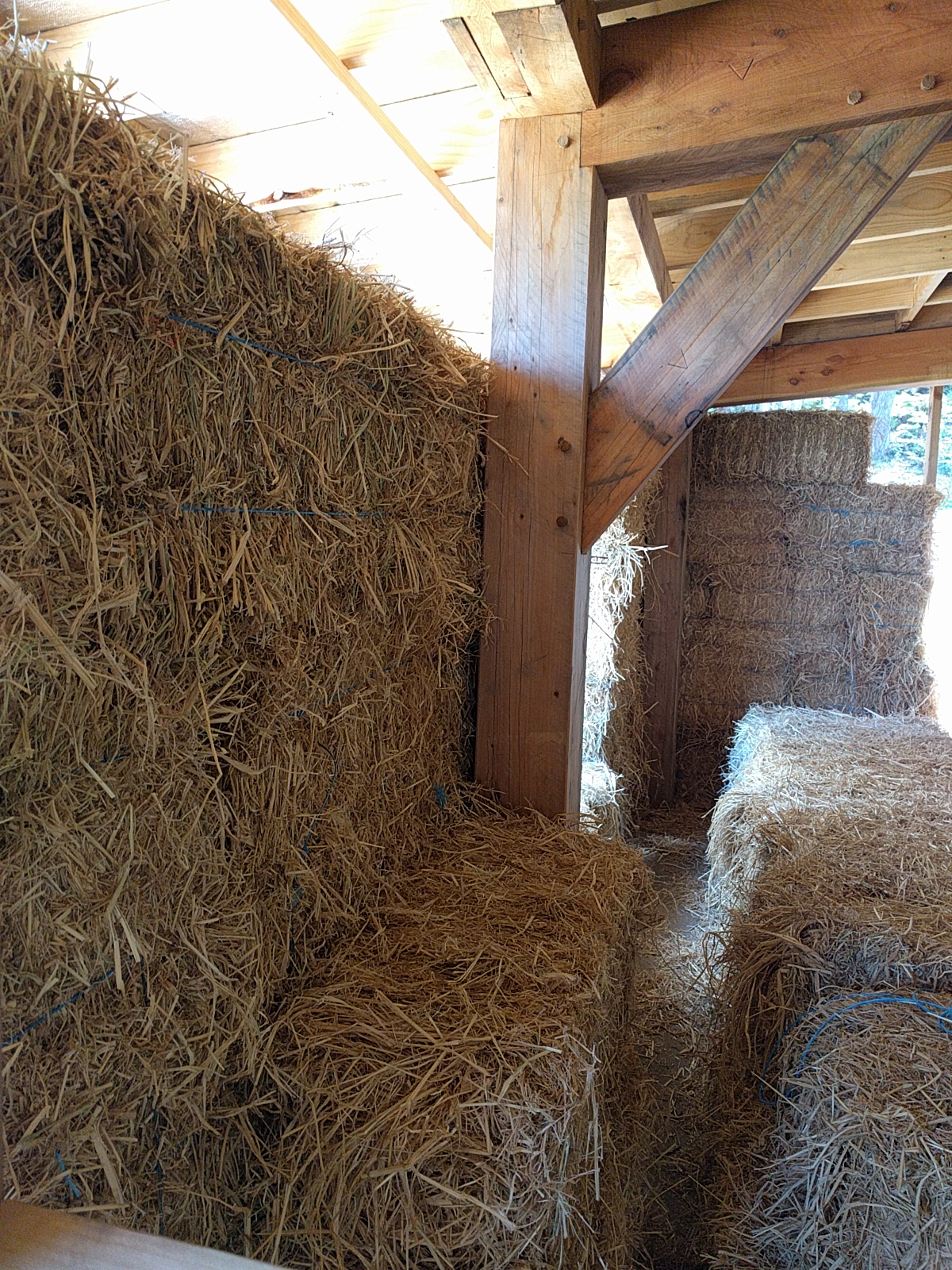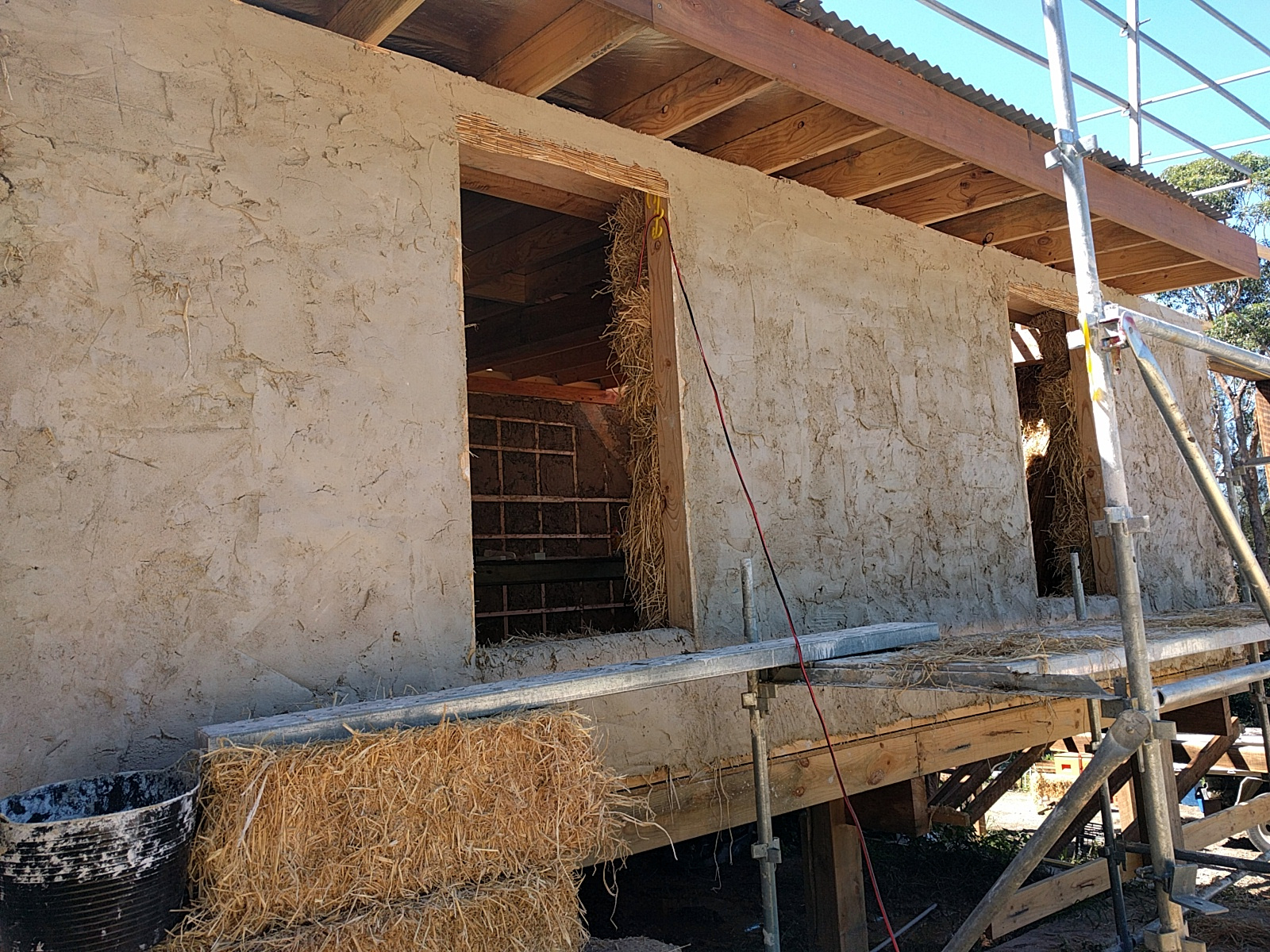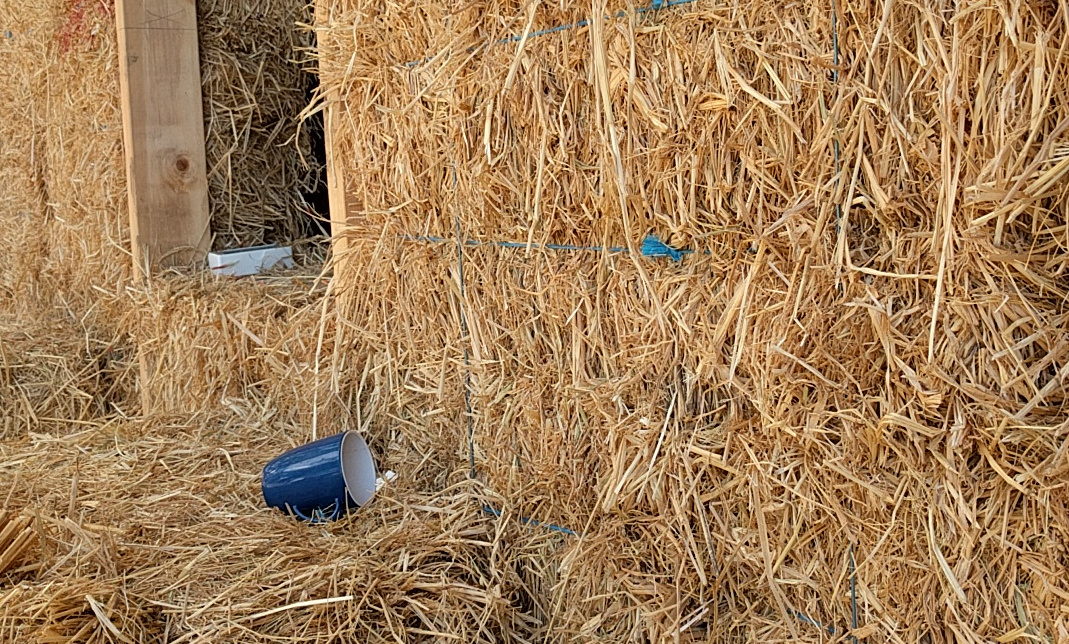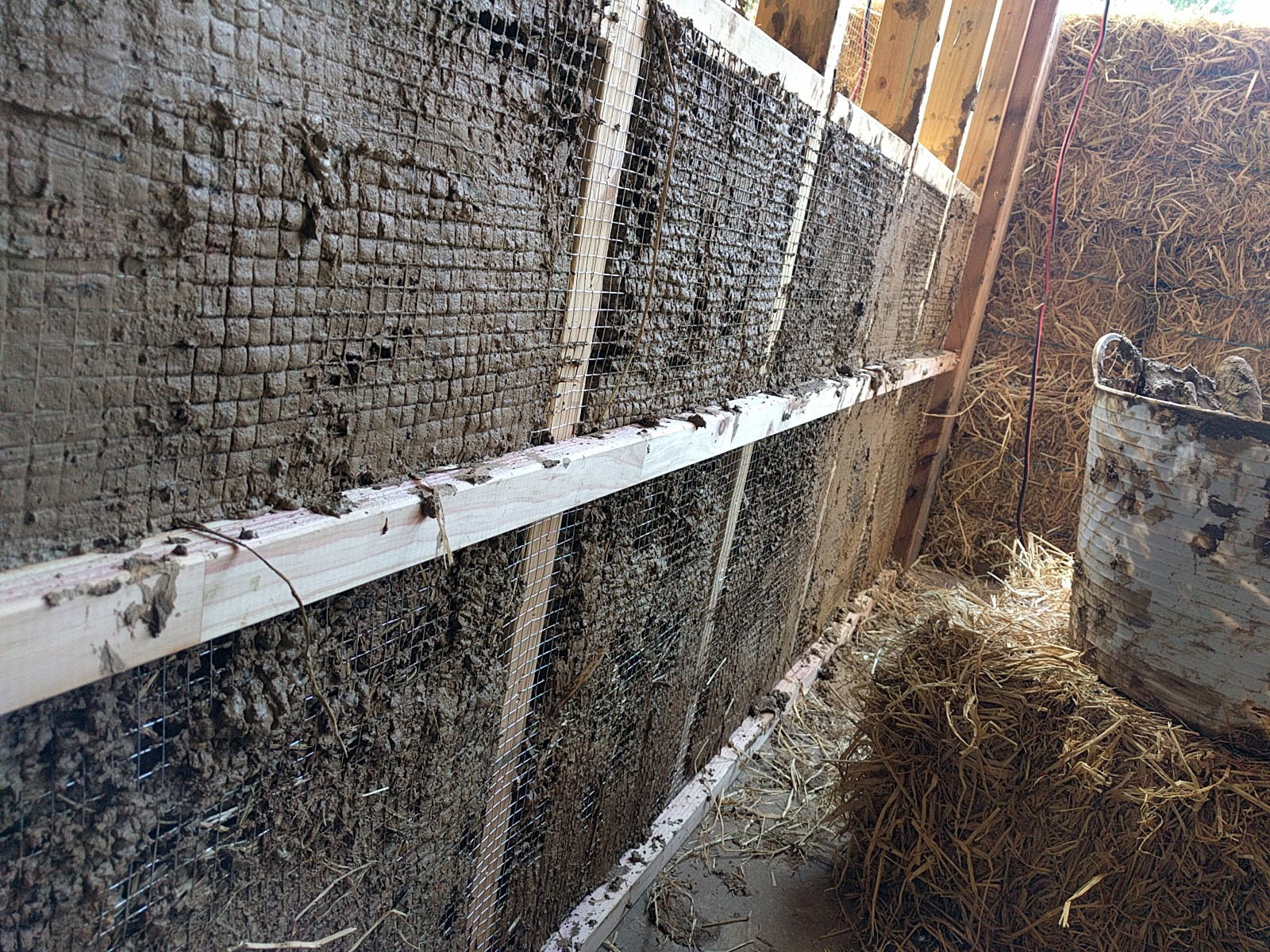The first day at a straw bale workshop – it smelled (and looked) like a barn.
My first impression of the building side when I arrived this morning was that of any other building side in Australia: the house-to-be has a wooden frame on a level surface with a roof of corrugated iron. However, in each room of this house-to-be lay a big pile of straw bales – the reason I was there. Each bale is over a meter wide and a meter thick, held together by rope. After the safety briefing we got to work on these bales.
It was 40 volunteers and an experienced crew of builders who took to the bales: trimming them, cutting them to size (with chain saws and hedge clippers) and stacking them in the timber frame to form the outside wall. By around lunchtime half the walls were up – amazing progress.
After lunch the group split and I took to the inside walls to prepare them for the mud tomorrow. We fixed chicken wiring to some walls which will serve as the cage for the mud. It made me feel like I was in a bird cage. This cage however will be filled with mud to add thermal mass to the inside of the house. This allows them to store heat as well as being relatively thin.
The whole building side smelled like a barn to me. We’re working with rice straw but it terms of smell and optics I couldn’t tell any difference from wheat straw. And carrying bales around in front of me, I got a sense of their insulating properties: it was nice and warm. It’s certainly something I’d like in my wall.
I spoke with a builder about both pesticides and pests (aka insects and rodents). The rice plants were last treated with pesticides when the plants were small and although they are not considered organic they are (almost) pesticide free. After the harvest the plants (and then the straw) have not been treated to protect the bales from pests. That was surprising to me. The argument however is that walls will be rendered and no rodent should be able to tunnel into the wall. Plus, being dried out to a moisture content of fifteen percent, the straw holds no food for any ‘visitors’. That sounded logical to me.
So I continued to carry the straw around, stood on top of the bales and hammered them into place.
The atmosphere among us volunteers and the entire team was very friendly and supportive. We all helped and worked where we could. And I was amazed at the speed of learning and teaching others: ‘you’ve done something once so you know how it works’ seemed to be our mantra. It’s also fun to push a wall into place and wiggle it until it was level.
I enjoyed my first day on a building side of a straw bale house and I’m sure to be dreaming about rolling around in straw.




